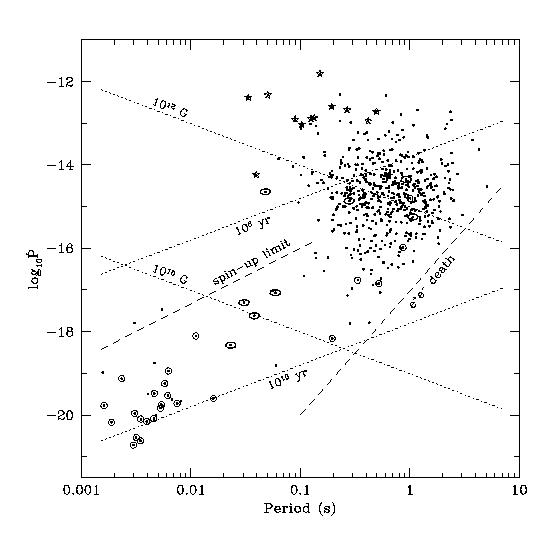 ms
ms
![]() t < 100,000 years
t < 100,000 years
![]() Short periods
Short periods  ms
ms
![]() Large period derivatives
Large period derivatives ![]()
![]() Strong magnetic fields
Strong magnetic fields ![]() Gauss
Gauss
![]() Close to Galactic plane
Close to Galactic plane
Table 1: Young Energetic Radio Pulsars. O - optical, X - X-rays,
![]() -
- ![]() -rays, I - infra-red, U - ultraviolet,
J - jet, N - nebula, G - glicthes, BU - bullets, B - bow shock, Y - yes, P - probably, N - no, ? - maybe
-rays, I - infra-red, U - ultraviolet,
J - jet, N - nebula, G - glicthes, BU - bullets, B - bow shock, Y - yes, P - probably, N - no, ? - maybe
![]() Vast array of phenomena result from large
Vast array of phenomena result from large
![]()

![]()
Figure 20: The radio pulsar equivalent of the Hertzsprung-Russell diagram - a
physical diagram indicating the nature and evolution of neutron stars. Each
dot represents a pulsar, stars represent pulsars associated with supernova
remnants, circles indicate pulsars in binary systems and ellipses indicate
pulsars in binary systems with eccentric orbits.